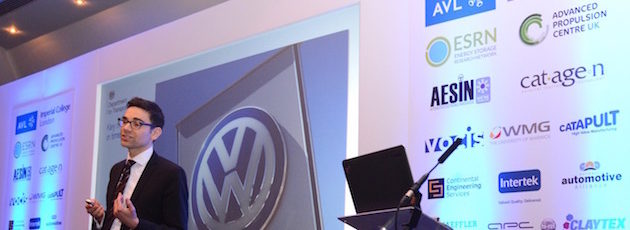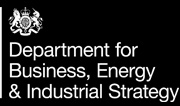
Event Review: Future Powertrain Conference 2016
The Future Powertrain Conference 2016 had one main theme: emissions – showing that all supply chain companies also need to have this focus…
In summary:
- Volkswagen emissions scandal mentioned in many presentations
- Keynote speech delivered by Michael Hurwitz from the Department for Transport: “We need to engineer for the future world.”
- Prof Neville Jackson from Ricardo: “By 2030 the focus won’t be on tailpipe emissions, but instead will be on the whole environmental impact of a vehicle.”
- Real life driving emissions from over one million cars showed one manufacturer as having the highest emissions
BIG ISSUES IN THE INDUSTRY
The Future Powertrain Conference 2016 opened with a welcome from Prof Matthias Wellers, Managing Director, AVL Powertrain UK, who summarised some of the ‘big issues’ in the industry at the moment. Perhaps not surprisingly, the Volkswagen emissions scandal appeared in this round-up, along with the next impending European fleet average emissions target for manufacturers of 95g/km CO2, which is being introduced by 2020. The other issue that was a recurring theme throughout the event was the NEDC emissions and fuel economy test, which was introduced in the 1970’s, and which is unanimously accepted as not representing real world driving more than 40 years later.
Prof Greg Offer also gave a welcome, and reminded the audience of the purpose of the Future Powertrain Conference – to encourage engagement between academia and industry, and to try and ensure that academics are one step ahead in terms of thinking. Greg ended by saying that much progress is being made with more efficient powertrains, but we can’t scale up alternative technologies fast enough.
MICHAEL HURWITZ, DEPARTMENT FOR TRANSPORT: THE ROAD AHEAD: NOW AND NEXT IN POLICY FOR EMISSIONS, EFFICIENCY AND MOBILITY
The first keynote speech was delivered by Michael Hurwitz from the Department for Transport, entitled ‘The road ahead: Now and next in policy for emissions, efficiency and mobility.’ Michael has been on the speaker scene for about the same length of time as Green Car Guide has been covering such events, in other words dating back to at least 2008. Many previous reviews of Michael’s presentations appear on this site (see links to other event reviews below), and over the years the content has become more focused on thought leadership around future high-level trends.
This presentation didn’t disappoint; after starting with a quick review of how far electric vehicles have come since Michael’s first talks, when the G-Wiz was the main electric vehicle on the streets of London, things moved swiftly on to the issue of the Volkswagen emissions scandal – this subject already being mentioned for the second time in the conference.
‘Dieselgate’ happened at a time when the industry was already involved in negotiations about overhauling the emissions test cycle in Europe, and one of the key outcomes of the VW scandal, according to Michael, is the erosion of trust between the industry and the regulators, and regulators globally will feel more ‘emboldened’. The direction of emissions targets was always going to be downwards, and the Volkswagen scandal will only have served to accelerate this trajectory.
Emissions, of course, relate to both CO2 and the emissions that impact upon local air quality, with NOx being the main culprit highlighted by the VW fiasco. With the health issues from poor local air quality now being big news around the world from London to China, this subject won’t be going away.
Michael also highlighted connectivity and autonomous vehicles – two areas rapidly joining low emissions as the next big things for the industry. Which led on to some final words of wisdom: we always need to think about the next thing after the next thing, and that we need to engineer for the future world, with places such as Shanghai being cited as examples. Whatever may happen with variables such as the global economy, one thing is certain: our future mobility will always have to be more efficient.
PROF NEVILLE JACKSON, RICARDO: FUTURE POWERTRAIN DEMAND ENERGY SOURCES AND POTENTIAL TECHNOLOGIES
The second keynote of the Future Powertrain Conference 2016 was delivered by Prof Neville Jackson from Ricardo, on the subject of ‘Future Powertrain Demand Energy Sources and Potential Technologies’. Neville also highlighted the issue of nitrogen oxides (NOx (NO and NO2)) emissions in our cities, with diesel vehicles being the main culprits, and summarising that the car industry has ‘not done a good job’ with nitrogen oxides – again, as highlighted by the Volkswagen scandal. As Michael Hurwitz stressed, air quality regulations will not be going away – just the opposite in fact. To achieve lower emissions for all cars (including performance cars), Neville confirmed that an increasing level of electrification is the answer.
In terms of heavy goods vehicles, electric power may provide a solution for short distances, but for longer journeys, the battery would have to be almost as heavy as the entire weight of the truck. A hydrogen tank would also have to be huge. So liquid fuel is likely to remain the propulsion source for long distance HGVs for the foreseeable future – with advanced (ie. sustainable) biofuels playing a part in this.
The ideal solution for transport is to have EVs in cities, and efficient internal combustion engines between cities – and a model of hiring different cars for different uses is likely to be on the rise, and the current trend of owning a car is likely to be on the decline.
Neville talked about ongoing efforts to improve the emissions testing cycle. But looking further ahead, by 2030 the focus won’t be on tailpipe emissions, but instead will be on the whole environmental impact of a vehicle.
After the two keynotes came technical presentations on Engine Systems and Batteries, and also a talk entitled ‘An Outsiders View – How Banks view the Automotive Supply Chain in the current Economic Climate”.
THE FUTURE POWERTRAIN CONFERENCE 2016 – REAL WORLD DRIVING EMISSIONS & TESTING
After lunch there was a session entitled ‘Real World Driving Emissions & Testing’. Like the morning’s technical presentations, there was a lot of in-depth detail. One of the more noteworthy snippets included that DPF regeneration will be included in future emissions testing regulations. Also, particulate matter emissions from the tailpipe of Euro 5/6 cars are less than 1 mg/km, but PM emissions from brakes and tyres are around 3 mg/km. To address this, one manufacturer is looking at developing a ‘vacuum cleaner’ for car brakes.
By far the most interesting – and eye-opening – presentation in this section was about real driving emissions, from Dr James Tate, University of Leeds. James has been involved in over one million vehicle ‘pass-bys’, when the actual emissions from cars in real use on real roads in the UK have been measured. Number plates have also been recorded, so the data provides real-world emissions that can be attributed to actual makes and models of vehicles – and the results are somewhat of a news story.
Firstly, the overall results have shown that petrol cars are reasonably clean, with petrol hybrids being cleaner still. The latest Euro 6 diesels – dominated by German manufacturers – showed a 50% improvement in NOx emissions compared to older diesels.
However the big news is that there was one manufacturer whose cars recorded much higher emissions of NOx than all others. Was it Volkswagen? No; along with most German manufacturers, VW performed well. The brand with much higher recorded emissions was: Vauxhall. It’s interesting that this hasn’t hit the headlines yet…
James concluded by reiterating what other speakers had inferred: low emission zones will be coming to a city near you soon. Any car manufacturers and their engineers that aren’t focused on planning for this are going to have challenges ahead.





